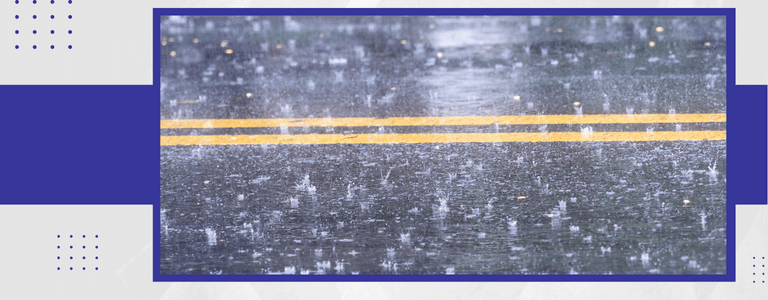
August 30, 2022 Last updated on June 16, 2023 by Bob Fisher Bob Fisher Landscape Trailers, Utility Trailers
Whether you own travel or landscape trailers, one thing you know is driving in the rain is way more challenging than driving in dry weather. A trailer’s extra weight and size make driving different even in the best weather, but risks significantly increase when the weather turns.
The trick with towing a trailer in the rain is caution. You must take extra precautions for every maneuver: stopping, turning, slowing, accelerating, etc. You need to focus on five areas to stay safe on the road.
Before starting on the road with your utility trailer in tow, check all your lights. You want to ensure everything is connected and powered correctly. Your turn signals and brake lights are essential when driving in the rain.
Too many people hook up and check the lights but then turn them off. Turn the lights on. You need your lights in the sun, shade, overcast, and especially rain. Your lights keep you and others safe on the road.
Wet weather creates the perfect condition for fishtailing. The hitch is a pivot point. When the vehicle encounters slick conditions, the trailer can swing from side to side. It is a terrifying experience.
Worn tires are more likely to fishtail than tires with a healthy tread. Also, tires with low tire pressure can make the issue more likely.
Tire maintenance is vital to a safe road trip. Even tires that look good should be replaced if they are six years past the manufacturer’s date.
Driving slowly is the safest bet when driving in the rain with a trailer. The first bit of rainfall is usually the most dangerous because it makes the roads slicker. The initial rain can bring old oil out of the pavement, and it increases the likelihood of hydroplaning.
While you want to drive slowly, you do not want to drive too slowly. Driving at a slower speed than those around you, especially on the highway, can increase accident risks.
If you must drive slower than traffic, consider using your hazard lights. However, it is often better to exit the roadway and wait for the storm to pass if you do not feel comfortable driving.
Besides watching your speed, you want to leave enough room between you and the car in front of you. There should be enough space to allow for slow stopping. The worst thing you can do is slam on your brakes.
Slamming on your brakes increases the likelihood of fishtailing and hydroplaning. Also, stopping abruptly can cause accidents.
Rain reduces tire traction, meaning it takes longer to stop. Therefore, while you might typically leave three or four car lengths between you and the driver ahead, double that length to ensure a safe stopping distance.
Heavy rains make the road less safe and reduce visibility. Sometimes, the best thing you can do to ensure your safety and the safety of others is to stop. If possible, pull off the road and into a parking or rest area. If you cannot safely exit the roadway, pull to the side and put your hazards on.
Driving a trailer is challenging even in the best conditions, but rain makes the task significantly more difficult. To ensure your safety and the safety of those around you, ensure your lights are on, you keep your distance, drive slow, and brake gently. As a trailer manufacturer, Millroad Manufacturing knows the importance of safe driving and building durable and capable custom trailers. Check out our website for more information.